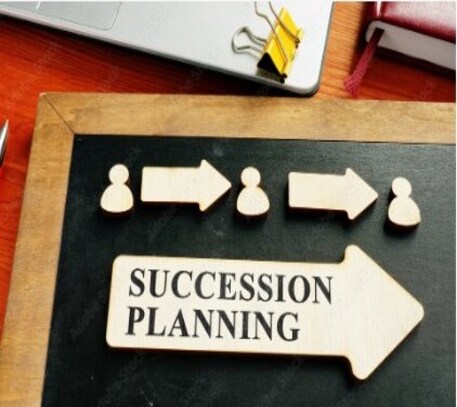Business Succession Planning
LEARNING OUTCOMES:
- Demonstrate an understanding of the value of succession planning for successful businesses.
- Demonstrate expertise with the key elements of a succession plan.
- Create and discuss aspects of a succession plan.
- Discuss the elements of a succession plan in terms of roles, responsibility, function, scope, and evaluation.
COURSE OVERVIEW & CONTENT:
Business succession planning is the process of identifying and preparing the next generation of leaders for a business. It involves identifying key roles within the company and developing a plan to fill those roles with qualified individuals. There are several benefits to having a solid business succession plan in place.
First, it ensures that the business can continue to operate smoothly even if key employees leave or retire. This is important for maintaining stability and minimizing disruptions. Second, it can help to identify and groom potential leaders within the company, helping to develop the skills and experience necessary for these individuals to be successful in their roles.
Additionally, a well-planned succession can help to maintain the value of the business, as it demonstrates to investors and stakeholders that there is a plan in place for the future. Finally, succession planning can help to ensure that the company's culture and values are preserved over time. Overall, business succession planning is an important tool for any business looking to ensure its long-term success.
A Need for Succession Planning
- The Differences Between Succession Planning and Replacement Hiring
- Advantages of Succession Planning
Defining a Succession Plan
- The SUCCESS Acronym
- Strong Leaders and a Strong Organization
- Components of the Plan
- Setting the Scope
Critical People in Organization
Identifying Resources and Analyzing Risks
- Identifying Resources
- Internal and External Successors
- Risk Assessment
Defining Roles, Responsibilities, and Functions
- Individualized Engagement Plans
- Creating Risk Assessments
- Working the Plan
- Succession Plan Profiles
Gathering Information
- Identify Ways To Look Within Own Organizations And Determine What The Critical Positions Are
Forecasting Needs
- Key Ingredients of a Successful Plan
- Role of Coaching and Mentoring
Putting the Plan Together
- Using Appreciative Inquiry (AI) and Leadership Quality Assessments
- How to Choose the Leader
Putting the Plan into Action
- Phased Implementation
- Technology
- Using Technology to Facilitate Putting the Plan into Action
Evaluating and Reviewing the Plan
- The Importance of Evaluation
- Evaluation Challenges
- Sample Evaluation
- Check Out the Checklist
- Modifying an Evaluation Checklist to Suit Organization’s Needs
Your Action Plan
- Plan and Then Do
- Next Steps
- Review Exercise
Testimonials
Special Offers
SPECIAL OFFER: Book today for Customer Care for Customers With Special Needs Programme and save 30% for in-house programme.
click hereSPECIAL OFFER: Book two places and get the third booking on the same course free of charge.

